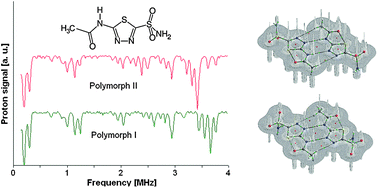14N NQR, 1H NMR and DFT/QTAIM study of hydrogen bonding and polymorphism in selected solid 1,3,4-thiadiazole derivatives
Abstract
The 1,3,4-thiadiazole derivatives (

* Corresponding authors
a
»Jozef Stefan« Institute, Jamova 39, 1000 Ljubljana, Slovenia
E-mail:
janez.seliger@fmf.uni-lj.si
Fax: +386 1 2517281
Tel: +386 1 4766576
b Faculty of Mathematics and Physics, University of Ljubljana, Jadranska 19, 1000 Ljubljana, Slovenia
c Faculty of Physics, Adam Mickiewicz University, Umultowska 85, 61-614 Poznań, Poland
The 1,3,4-thiadiazole derivatives (

 Please wait while we load your content...
Something went wrong. Try again?
Please wait while we load your content...
Something went wrong. Try again?
J. Seliger, V. Žagar and J. N. Latosińska, Phys. Chem. Chem. Phys., 2010, 12, 13007 DOI: 10.1039/C0CP00195C
To request permission to reproduce material from this article, please go to the Copyright Clearance Center request page.
If you are an author contributing to an RSC publication, you do not need to request permission provided correct acknowledgement is given.
If you are the author of this article, you do not need to request permission to reproduce figures and diagrams provided correct acknowledgement is given. If you want to reproduce the whole article in a third-party publication (excluding your thesis/dissertation for which permission is not required) please go to the Copyright Clearance Center request page.
Read more about how to correctly acknowledge RSC content.
 Fetching data from CrossRef.
Fetching data from CrossRef.
This may take some time to load.
Loading related content
